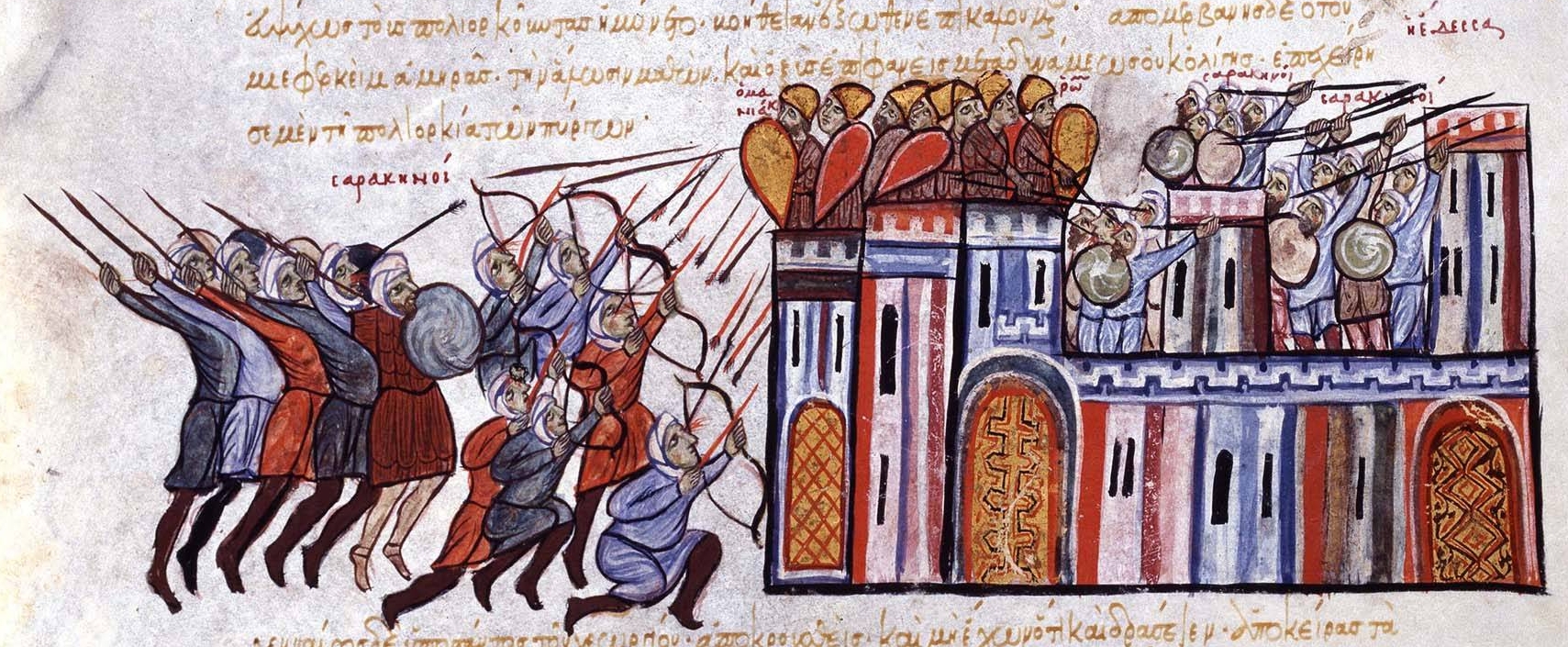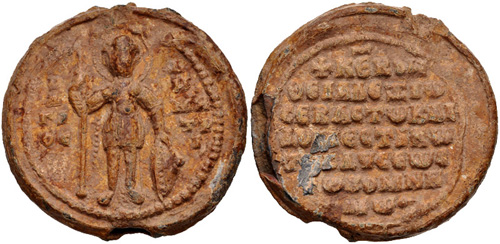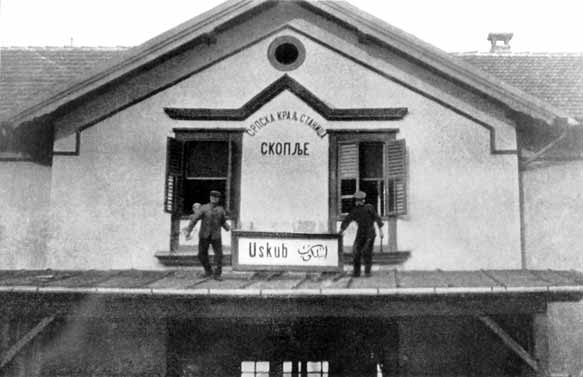|
Dalassenos Family
Dalassenos (), feminine form Dalassene or Dalassena (Greek: Δαλασσηνή), was a Byzantine aristocratic family prominent in the 11th century. Origins and rise to prominence The family's name derives from their ancestral home, the city of Dalassa, modern Talas in eastern Turkey. The ethnic origin of the family is unknown; the Armenian historian Nicholas Adontz identified them as Armenians, but their names are not Armenian, and most scholars hesitate to accept Adontz's suggestion.. The first prominent member of the family was the ''magistros'' Damian Dalassenos, who held the important post of '' doux'' of Antioch in 995/996–998.. His sons also reached senior offices: two of them, Constantine and Theophylaktos, also occupied the post of ''doux'' of Antioch, while Romanos Dalassenos was ''katepano'' of Iberia. The East, and Antioch in particular, seem to have been the preserve and main power-base of the family during the first decades of the 11th century. Constantine in part ... [...More Info...] [...Related Items...] OR: [Wikipedia] [Google] [Baidu] |
Byzantine Empire
The Byzantine Empire, also known as the Eastern Roman Empire, was the continuation of the Roman Empire centred on Constantinople during late antiquity and the Middle Ages. Having survived History of the Roman Empire, the events that caused the fall of the Western Roman Empire in the 5th centuryAD, it endured until the fall of Constantinople to the Ottoman Empire in 1453. The term 'Byzantine Empire' was coined only after its demise; its citizens used the term 'Roman Empire' and called themselves 'Romans'. During the early centuries of the Roman Empire, the western provinces were Romanization (cultural), Latinised, but the eastern parts kept their Hellenistic culture. Constantine the Great, Constantine I () legalised Christianity and moved the capital to Constantinople. Theodosius I, Theodosius I () made Christianity the state religion and Greek gradually replaced Latin for official use. The empire adopted a defensive strategy and, throughout its remaining history, expe ... [...More Info...] [...Related Items...] OR: [Wikipedia] [Google] [Baidu] |
Battle Of Azaz (1030)
The Battle of Azaz was an engagement fought in August 1030 near the Syrian town of Azaz between the Byzantine army, led by Emperor Romanos III Argyros () in person, and the forces of the Mirdasid Emirate of Aleppo, likewise under the personal command of Emir Shibl al-Dawla Nasr (). The Mirdasids defeated the much larger Byzantine army and took great booty, even though they were eventually unable to capitalise on their victory. Aleppo had long been a flashpoint between Byzantium and its Arab neighbours, with the Byzantines claiming a protectorate over the city since 969. In the aftermath of a defeat inflicted on the Byzantine governor of Antioch by the Mirdasids, Romanos launched a campaign against Aleppo. Despite his own inexperience in military matters, Romanos decided to lead the army in person, leading contemporary Byzantine chroniclers to point to a quest for military glory as his primary motivation, rather than the preservation of the status quo. At the head of his army, es ... [...More Info...] [...Related Items...] OR: [Wikipedia] [Google] [Baidu] |
Constantinople
Constantinople (#Names of Constantinople, see other names) was a historical city located on the Bosporus that served as the capital of the Roman Empire, Roman, Byzantine Empire, Byzantine, Latin Empire, Latin, and Ottoman Empire, Ottoman empires between its consecration in 330 until 1930, when it was renamed to Istanbul. Initially as New Rome, Constantinople was founded in 324 during the reign of Constantine the Great on the site of the existing settlement of Byzantium, and shortly thereafter in 330 became the capital of the Roman Empire. Following the collapse of the Western Roman Empire in the late 5th century, Constantinople remained the capital of the Eastern Roman Empire (also known as the Byzantine Empire; 330–1204 and 1261–1453), the Latin Empire (1204–1261), and the Ottoman Empire (1453–1922). Following the Turkish War of Independence, the Turkish capital then moved to Ankara. Although the city had been known as Istanbul since 1453, it was officially renamed as Is ... [...More Info...] [...Related Items...] OR: [Wikipedia] [Google] [Baidu] |
Alexios I Komnenos
Alexios I Komnenos (, – 15 August 1118), Latinization of names, Latinized as Alexius I Comnenus, was Byzantine Emperor, Byzantine emperor from 1081 to 1118. After usurper, usurping the throne, he was faced with a collapsing empire and constant warfare throughout his reign, Alexios was able to curb the Byzantine decline and begin the military, financial, and territorial recovery known as the Komnenian restoration. His appeals to Western Europe for help against the Seljuk Empire, Seljuk Turks were the catalyst that sparked the First Crusade. Although he was not the first emperor of the Komnenos, Komnenian dynasty, it was during his reign that the Komnenos family came to full power and initiated a hereditary succession to the throne. The son of John Komnenos (Domestic of the Schools), John Komnenos and a nephew of Isaac I Komnenos, Alexios served with distinction under three Byzantine emperors. In 1081, he led a rebellion against Emperor Nikephoros III Botaneiates and took ... [...More Info...] [...Related Items...] OR: [Wikipedia] [Google] [Baidu] |
Isaac I Komnenos
Isaac I Komnenos or Comnenus (; – 1 June 1060) was Byzantine emperor from 1057 to 1059, the first reigning member of the Komnenian dynasty. The son of the general Manuel Erotikos Komnenos, he was orphaned at an early age, and was raised under the care of Emperor Basil II. He made his name as a successful military commander, serving as commander-in-chief of the eastern armies between and 1054. In 1057 he became the head of a conspiracy of the dissatisfied eastern generals against the newly crowned Michael VI Bringas. Proclaimed emperor by his followers on 8 June 1057, he rallied sufficient military forces to defeat the loyalist army at the Battle of Hades. While Isaac was willing to accept a compromise solution by being appointed Michael's heir, a powerful faction in Constantinople, led by the ambitious Patriarch of Constantinople, Michael Keroularios, pressured Michael to abdicate. After Michael abdicated on 30 August 1057, Isaac was crowned emperor in the ... [...More Info...] [...Related Items...] OR: [Wikipedia] [Google] [Baidu] |
John Komnenos (Domestic Of The Schools)
John Komnenos (, ''Iōannēs Komnēnos''; – 12 July 1067) was a Byzantine aristocrat and military leader. The younger brother of Emperor Isaac I Komnenos, he served as Domestic of the Schools during Isaac's brief reign (1057–59). When Isaac I abdicated, Constantine X Doukas became emperor and John withdrew from public life until his death in 1067. Through his son Alexios I Komnenos, who became emperor in 1081, he was the progenitor of the Komnenian dynasty that ruled the Byzantine Empire from 1081 until 1185, and the Empire of Trebizond from 1204 until 1461. Life John Komnenos was born as the younger son of the ''patrikios'' Manuel Erotikos Komnenos, a senior military commander in the late reign of Basil II (). He is first mentioned in 1057, the year his elder brother Isaac I Komnenos, at the head of a group of generals, rebelled against Michael VI () and forced him off the throne. At the time of the revolt, John held the post of '' doux'', but after his brother's victor ... [...More Info...] [...Related Items...] OR: [Wikipedia] [Google] [Baidu] |
Anna Dalassene
Anna Dalassene (; ca. 1025/30 – 1 November 1100/02) was an important Byzantine noblewoman who played a significant role in the rise to power of the Komnenoi in the eleventh century. She exercised great influence over her son, the Emperor Alexios I Komnenos, who gave her the title '' Augusta''. She also administered the empire as regent during his many absences from Constantinople on long military campaigns during the early part of his reign. As empress-mother, she exerted more influence and power than the empress-consort, Irene Doukaina, a woman whom she hated because of past intrigues with the Doukai. Life Early life and family Anna was the daughter of Alexios Charon, and a lady of the noble Dalassenos family. Her maternal grandfather was named Adrianos Dalassenos, evidently a son of the '' magistros'' and '' doux'' of Antioch, Theophylact Dalassenos. Very little is known about her father, who was an obscure imperial official in Italy. Her mother's family, the Dalasse ... [...More Info...] [...Related Items...] OR: [Wikipedia] [Google] [Baidu] |
Thessalonica (theme)
The Theme of Thessalonica () was a military-civilian province (''thema'' or theme) of the Byzantine Empire located in the southern Balkans, comprising varying parts of Central and Western Macedonia and centred on Thessalonica, the Empire's second-most important city. History In Late Antiquity, Thessalonica was the capital of the Roman province of Macedonia and of the Diocese of Macedonia, and the seat of the praetorian prefect of Illyricum. With the loss of most of the Balkan hinterland to the Slavic and Bulgar invasions in the 7th century, however, the authority of the prefect (in Greek ''eparchos'', "eparch") was largely confined to the city and its immediate surroundings. The eparch continued to govern Thessalonica until the early 9th century, when he was replaced by a ''strategos'' at the head of the new theme of Thessalonica. The ''strategos'' of Thessalonica is attested for the first time in 836, but a letter of Emperor Michael II () to the Frankish king Louis the P ... [...More Info...] [...Related Items...] OR: [Wikipedia] [Google] [Baidu] |
Skopje
Skopje ( , ; ; , sq-definite, Shkupi) is the capital and largest city of North Macedonia. It lies in the northern part of the country, in the Skopje Basin, Skopje Valley along the Vardar River, and is the political, economic, and cultural center of the country. As of the 2021 North Macedonia census, 2021 census, the city had a population of 526,502. Skopje covers 571.46 km² and includes both urban and rural areas, bordered by several Municipalities of North Macedonia, municipalities and close to the borders of Kosovo and Serbia. The area of Skopje has been continuously inhabited since at least the Chalcolithic period. The city — known as ''Scupi'' at the time — was founded in the late 1st century during the rule of Domitian, and abandoned in 518 after an earthquake destroyed the city. It was rebuilt under Justinian I. It became a significant settlement under the First Bulgarian Empire, the Serbian Empire (when it served briefly as a capital), and later under the Otto ... [...More Info...] [...Related Items...] OR: [Wikipedia] [Google] [Baidu] |
Balkans
The Balkans ( , ), corresponding partially with the Balkan Peninsula, is a geographical area in southeastern Europe with various geographical and historical definitions. The region takes its name from the Balkan Mountains that stretch throughout the whole of Bulgaria. The Balkan Peninsula is bordered by the Adriatic Sea in the northwest, the Ionian Sea in the southwest, the Aegean Sea in the south, the Turkish straits in the east, and the Black Sea in the northeast. The northern border of the peninsula is variously defined. The highest point of the Balkans is Musala, , in the Rila mountain range, Bulgaria. The concept of the Balkan Peninsula was created by the German geographer August Zeune in 1808, who mistakenly considered the Balkan Mountains the dominant mountain system of southeastern Europe spanning from the Adriatic Sea to the Black Sea. In the 19th century the term ''Balkan Peninsula'' was a synonym for Rumelia, the parts of Europe that were provinces of the Ottoman E ... [...More Info...] [...Related Items...] OR: [Wikipedia] [Google] [Baidu] |
Constantine IX Monomachos
Constantine IX Monomachos (; 980/ 1000 – 11 January 1055) reigned as Byzantine emperor from June 1042 to January 1055. Empress Zoë Porphyrogenita chose him as a husband and co-emperor in 1042, although he had been exiled for conspiring against her previous husband, Emperor Michael IV the Paphlagonian. The couple shared the throne with Zoë's sister Theodora Porphyrogenita. Zoë died in 1050, and Constantine continued his collaboration with Theodora until his own death five years later. Constantine's reign was marked by prodigality, enjoying an abundant imperial treasury following the conquests of his predecessors and the era of economic expansion that the Empire experienced in the first half of the 11th century. While Zoe was deprived of access to this treasure by Romanus III and then Michael IV, her third husband ensured that she could enjoy it as much as she wanted. He also distributed a large number of gifts, both in monetary forms and through donations of land or tax ... [...More Info...] [...Related Items...] OR: [Wikipedia] [Google] [Baidu] |
Zoe (empress)
Zoe Porphyrogenita (also spelled Zoë; , "life"; 978 – 1050) was a member of the Macedonian dynasty who briefly reigned as Byzantine empress in 1042, alongside her sister Theodora. Before that she was enthroned as empress consort or empress mother to a series of co-rulers, two of whom were married to her. Zoe was born when her father Constantine was nominal co-emperor to his brother, Basil II. After a planned marriage to Holy Roman Emperor Otto III in 996 failed to materialise, Zoe spent subsequent years in the imperial palace. Her uncle Basil died in 1025 when Zoe was 47, and her father acceded the Byzantine throne as Constantine VIII. As he had no sons, Constantine hoped to continue the dynasty by marrying off one of his daughters. Zoe, aged 50, was married to Romanos Argyros. She and Romanos took the throne the next day on her father's death. Zoe's marriage to Romanos III was troubled, and Romanos was found dead in his bath in 1034. His death has been variously att ... [...More Info...] [...Related Items...] OR: [Wikipedia] [Google] [Baidu] |








